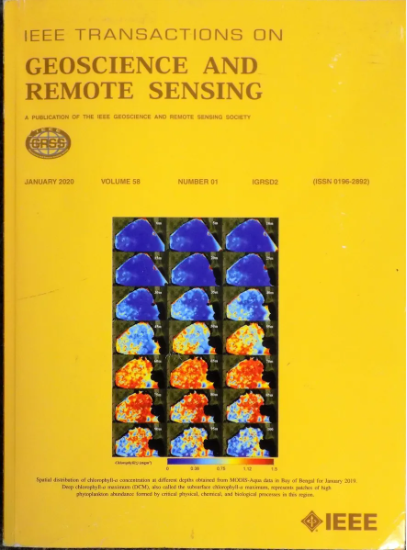CDF-UIE: Leveraging Cross-Domain Fusion for Underwater Image Enhancement
IF 7.5
1区 地球科学
Q1 ENGINEERING, ELECTRICAL & ELECTRONIC
IEEE Transactions on Geoscience and Remote Sensing
Pub Date : 2025-03-21
DOI:10.1109/TGRS.2025.3553557
引用次数: 0
Abstract
Underwater image enhancement (UIE) aims to restore image quality by mitigating inherent degradations in underwater imaging systems. While existing learning-based methods show promise, they face limitations in separating and processing frequency components, effectively fusing domain information, and balancing the enhancement of structures and details. To resolve these limitations, we propose cross-domain fusion (CDF)-UIE, a novel network that leverages and fuses cross-domain information for mitigating the degradation in underwater images. CDF-UIE first performs domain decoupling of input features using the proposed spatial-frequency decoupling (SFD) block. Then, we design an innovative CDF block, which effectively bridges the spatial- and frequency-domain features through the cross-domain attention mechanism. To produce stable and detailed enhanced outputs, we exploit the coarse and fine-scale information in the image reconstruction stage. In addition, we introduce a multiscale objective function that incorporates pixel-level, structural, and perceptual constraints to guide the enhancement process. We conduct extensive experiments on six diverse real-world underwater image datasets. Comprehensive experiments and real-world application tests demonstrate that CDF-UIE significantly outperforms existing methods, offering promising future applications in various underwater scenarios. The source code is available atCDF-UIE:利用跨域融合进行水下图像增强
本文章由计算机程序翻译,如有差异,请以英文原文为准。
求助全文
约1分钟内获得全文
求助全文
来源期刊

IEEE Transactions on Geoscience and Remote Sensing
工程技术-地球化学与地球物理
CiteScore
11.50
自引率
28.00%
发文量
1912
审稿时长
4.0 months
期刊介绍:
IEEE Transactions on Geoscience and Remote Sensing (TGRS) is a monthly publication that focuses on the theory, concepts, and techniques of science and engineering as applied to sensing the land, oceans, atmosphere, and space; and the processing, interpretation, and dissemination of this information.
 求助内容:
求助内容: 应助结果提醒方式:
应助结果提醒方式:


